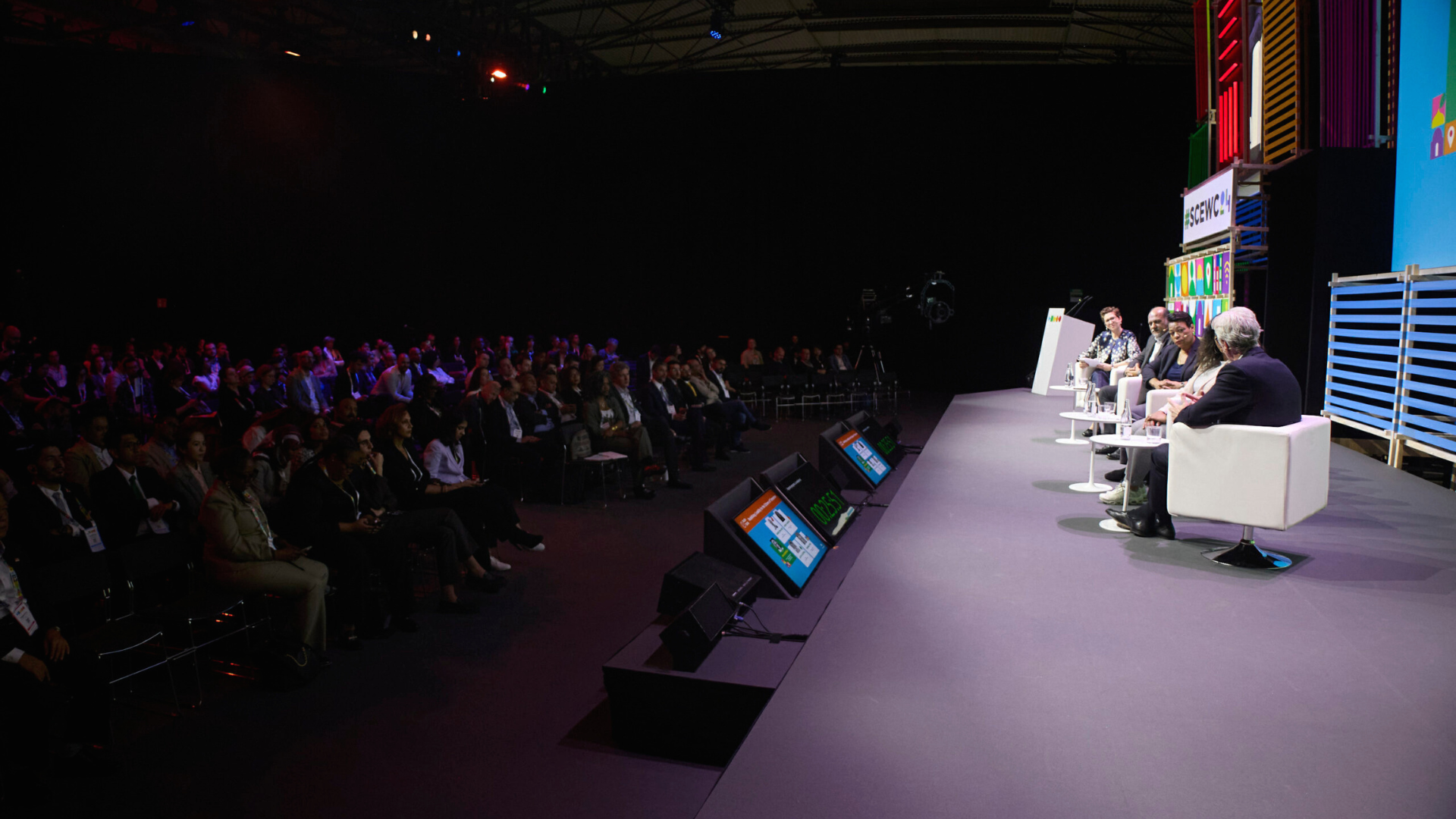A team from Younite recently attended the Smart City Expo World Congress in Barcelona, the world’s biggest and most influential event on urban innovation.
This year, the event brought together 25,000 attendees for an exciting three days. Of knowledge sharing, business collaboration, and active problem solving.
Below, we share three key takeaways from the event to help you understand the latest trends and developments shaping the future of smart cities.
1. Digital twins break down silos with a single source of truth
A recurring theme at the event was the challenge cities face in breaking down siloed departments. While cities collect vast amounts of data, a lack of coordination among departments can lead to inefficiencies and redundant investments.
Digital Twins clearly emerged as a compelling solution to this challenge. Acting as a single source of truth, digital twins integrate data across departments. Anne Eskola-Hickey, Chief Growth Officer at Younite, shares, “Digital twins can make a tremendous impact here by acting as a unified platform for all the digital services that a city provides. It’s not efficient for a city to make multiple investments in similar types of solutions. That’s why digital twins are so powerful. They work with multiple use cases and create a compounding effect that maximizes ROI from a single investment.”
2. More and more cities are looking to digital twins to enhance their emergency management
Emergency preparedness is another growing priority for cities. Cities with digital twins can enhance their capabilities by layering IoT sensor data and leveraging AI and predictive modeling. Training systems in real-world emergency scenarios is challenging due to the rarity of such events. However, by using a virtual environment for training. These systems can be fully prepared and operational as soon as they are deployed in real-world settings.
“"imagine using a digital twin and synthetic data to simulate an emergency response to flooding,” says Anne Eskola-Hickey. “You could train CCTV cameras to spot and flag rapidly rising water levels in a simulated digital environment. Once the physical cameras are actually deployed, they’re already trained and ready to go.”
3. Improving public transit is a top priority and effective use case to secure budgeting for digital twins
Among the many smart city benefits discussed at the event, improving public transit stood out as a top priority. And an effective entry point for securing funding for digital twin technology. “Public transit is often one of the biggest services that a city controls,” shares Anne Eskola-Hickey. “Many cities have committed to reducing their carbon emissions. Leveraging digital twins in planning for the optimal transit flow, can increase efficiency in operations as well as lower their carbon footprint.” Increasing public transit use over personal vehicles is one of the most effective ways to cut emissions. Making it a compelling case for investing in digital twin solutions.
Begin your smart city transformation with Younite
Smart cities are reshaping urban environments by integrating digital twins to optimize operations, drive innovation, and unlock long-term value. Through the power of digital twins, cities can create virtual models of their infrastructure. Enabling continuous refinement and adaptation across transportation, resource management, public services, and more. This not only streamlines operations but also generates compounding benefits. Proving the value of a single investment in technology that grows and evolves with the city’s needs.
If your city is ready to embark on its smart city transformation using digital twin technology. Younite is here to support you at every step.
